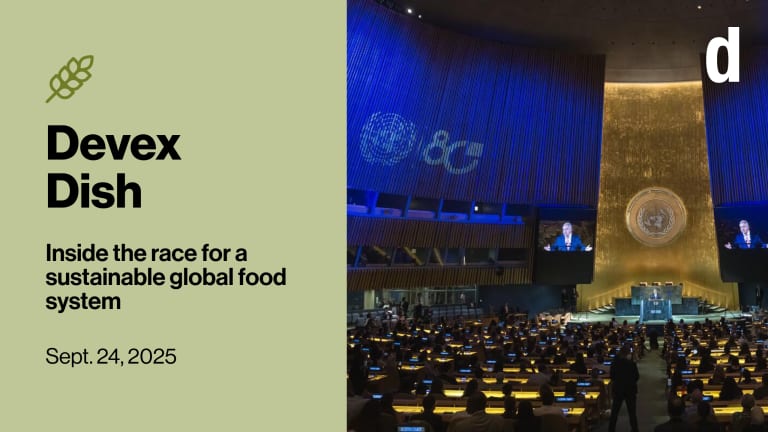
Anyone following international development is probably familiar with “stunting” — which in nontechnical terms means children being too short for their age. Over the past decade, as the world has focused unprecedented attention on undernutrition, stunting has taken center stage.
This spotlight on stunting has done considerable good. Notably, it has helped nutrition advocates to communicate the consequences of undernutrition to policymakers and donors and persuade them to support the fight against these challenges.
But the focus on stunting has also caused confusion, and this confusion risks preventing us from helping billions of people get the nutrition they need to live better lives. There is a general misperception today that addressing stunting — and its close cousin, linear growth retardation — will automatically address a host of development issues linked to nutrition. In many cases, however, stunting is not the problem we need to solve — it’s something that tells us there is a problem that needs solving.
Nonetheless, many nutrition programs in the developing world have made eliminating stunting their primary objective and are evaluating success based on whether rates of stunting go down. Limited impact on stunting is often seen as program failure, which unnecessarily discounts other benefits that nutrition and health programs bring to children in disadvantaged communities, such as better breastfeeding practices, improved diets, and reductions in illness.
Stunting is commonly believed to cause serious problems, including delayed child development, reduced productivity and earnings in adulthood, higher incidence of chronic diseases including obesity or cardiovascular problems, difficult childbirth, and poor birth outcomes such as low birthweight.
More on child health:
► Call for road deaths to be recognized as child health emergency
► Venezuela crisis reverses infant mortality progress by 18 years, Lancet finds
► Triple threat of stunting, anemia, and obesity poses looming crisis, health experts warn
The problem is that this belief is not entirely true. If it were, then addressing stunting by improving a child’s linear growth — making sure she or he grows tall enough — would lead to improvements in all these outcomes.
But our careful review of the available evidence shows this isn’t the case. And this subtle misinterpretation could harm the global nutrition agenda.
To be clear, stunting does indeed cause two of the abovementioned negative outcomes: difficult childbirth for women who were stunted in childhood and poor birth outcomes in their offspring. This causal link makes stunting an outcome of intrinsic value since improving linear growth can reduce the incidence of these negative consequences. Yet improved obstetric care and provision of nutrition supplements to expectant mothers are effective and immediate solutions to these problems.
Stunting does not cause delayed child development, reduced productivity and earnings, higher incidence of chronic diseases, or other commonly cited outcomes. The source of these problems is a deficient environment. A deficient environment is one that can lead to, among other things, children receiving too little food or food without the necessary nutrients, or being frequently plagued by illness. Solving the problems of child underdevelopment, diminished productivity or earnings, or high susceptibility to chronic disease requires fixing the deficient environment.
We recognize that the focus on stunting has been critical to building a narrative that alerts policymakers, advocates, and the public to the harmful consequences of undernutrition, and it has been widely successful in driving significant efforts to address undernutrition.
We should continue to monitor stunting rates, as they remain both an important indicator that children are growing up in a deficient environment and a useful means for comparing regions or progress over time. The key change is in how we direct our nutrition actions: delayed development, reduced productivity and earnings, and chronic diseases should be addressed directly.
Simply put, we should think of stunting as a smoke alarm in a house: It is, more than anything, a signal of a much larger problem. To maintain the current momentum on improving global nutrition, the attention of nutrition researchers, donors, and practitioners should not focus on turning off the alarm. We need to extinguish the fire.
We need to improve the deficient environments that children grow up in and prevent the negative consequences these environments have on children’s health and well-being. A sharp focus of nutrition investments, policies, and programs on outcomes that truly matter will help accelerate progress toward the well-being of billions in disadvantaged communities.
Edward Frongillo, director at the Global Health Initiatives at the University of South Carolina, contributed to this article.








